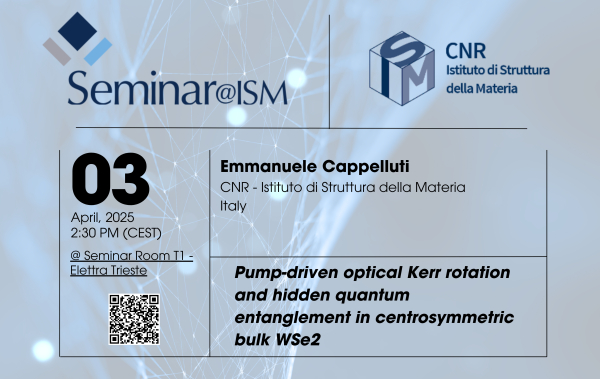Single-layer semiconducting transition-metal dichalcogenides (TMDs), lacking point inversion symmetry, provide an efficient platform for valleytronics, where the electronic, magnetic, valley and lattice degrees of freedom can be selectively manipulated by using polarized light. This task is however thought to be limited in parent bulk compounds where the point inversion symmetry is restored. Exploiting the underlying quantum physics in bulk materials is thus one of the biggest paradigmatic challenges.
Here we show that a sizable optical Kerr rotation can be efficiently generated in a wide energy range on ultrafast timescales in bulk WSe2, by means of circularly-polarized light. We rationalize these findings as a result of the hidden spin/layer/valley quantum entanglement. The spectral analysis reveals clear features at the three characteristic frequencies corresponding to the A-, B- and C-exciton edges. The origin and the relative sign of all these features is shown to stem from the selective Pauli blocking of intralayer and interlayer optical transitions. The long lifetime of the broadband Kerr response (~500 fs) provides a strong indication that coupled photo-induced electron and hole densities survive in bulk compounds longer than previously expected. The present report demonstrates that a hidden quantum entanglement is operative also in bulk centrosymmetric layered materials, opening the way for an effective exploitation of bulk WSe2 in optoelectronic applications.
Emmanuele Cappelluti, ha conseguito la Laurea in Fisica nel 1996 presso l'Università La Sapienza di Roma, e il Dottorato nel 1999 presso il Max-Planck-Institut FKF di Stuttgart (Germania).
Dopo il dottorato è tornato in Italia dove è diventato Ricercatore presso l'INFM (ora CNR) nel 2004.
Ha anche lavorato due anni a Madrid presso l' ICMM-CSIC.
